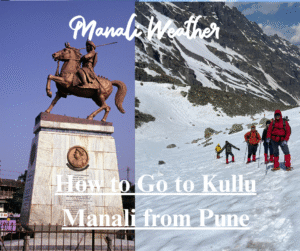Leh Height from Sea Level

Leh Height from Sea Level & Leh Elevation — Preparing for High-Altitude Adventures
A complete guide to Leh Height from Sea Level, the practical effects of being above sea level, and how to plan a safe, unforgettable trip to Ladakh.

What is Leh height from sea level?
When travellers talk about Leh Height from Sea Level Leh elevation or Leh altitude, they refer to a town that sits very high in the Indian Himalaya. Leh town itself is commonly given as roughly 3,500–3,525 metres (approx. 11,480–11,560 feet) above sea level. This high position — more than three kilometres above the ocean — is what gives Leh its cold desert climate, thin dry air, and spectacular mountain panoramas.
Quick elevation snapshot (useful numbers)
| Place | Approx. Elevation | Why it matters |
|---|---|---|
| Leh (town center) | ~3,520–3,525 m (≈11,550–11,560 ft) | Base for acclimatisation and local sightseeing. |
| Kushok Bakula Rimpochee Airport | ~3,250–3,260 m (≈10,660–10,690 ft) | Rapid arrival altitude — often the first altitude exposure for fly-in visitors. |
| Pangong Lake (day trips) | ~4,200–4,350 m | Higher day-trip altitude; requires extra acclimatisation caution. |
| High passes (e.g., Khardung La) | ~5,000+ m (variable) | Extreme altitude — not recommended immediately after arrival. |
How Leh elevation shapes climate and landscape
Leh’s altitude makes it a cold high-altitude desert. That means thin, dry air, lots of sunshine, big day–night temperature swings, and limited vegetation. Summers are short and pleasantly cool during the day but cold at night. Winters are long, bitter and snowy in higher zones. The thin air also allows very clear, long-range views — one reason photographers and landscape lovers flock to Leh.
Altitude effects travellers notice
- Breathlessness on exertion: climbing stairs or hiking feels harder at 3,500 m.
- Faster dehydration: dry air increases fluid loss — sip water frequently.
- Stronger UV exposure: sunburn risk is higher; wear sunscreen and sunglasses.
- Variable sleep & appetite: mild insomnia and reduced appetite are common first-day effects.
Acclimatisation — safe planning for Leh altitude
Preparing for the climb in elevation is the most important part of visiting Leh. Whether you arrive by air (rapid gain) or by road (gradual gain), plan time to let your body adapt. The simple rules below prevent most altitude-related issues.
| When | What to do | Why |
|---|---|---|
| Arrival day | Rest, hydrate, keep activity light. | Rapid ascent increases risk of AMS; rest helps adaptation. |
| Day 1–2 | Short walks, avoid heavy exertion; eat normally; monitor symptoms. | Gives the body time to adjust to lower oxygen levels. |
| Before higher trips | Spend at least 48–72 hours in Leh before visiting >4,000 m. | New altitude gains should be gradual for safety. |
Packing checklist for Leh altitude
- Layered clothing — base layer, warm mid-layer (fleece), windproof/waterproof outer.
- Sun protection — high-SPF sunscreen, UV sunglasses, wide-brimmed hat.
- Hydration gear — reusable water bottle and electrolyte sachets.
- Altitude-first aid — basic meds, and consult a doctor about acetazolamide (Diamox) if you have concerns.
- Comfort items — lip balm, moisturizer, and good walking shoes
Leh Height from Sea Level- Activities that depend on Leh elevation
Leh’s height opens up experiences not found at sea level: high-altitude trekking (marked trails and multi-day treks), driving over dramatic mountain passes, visiting high saline lakes like Pangong Tso, and exploring remote Buddhist gompas perched on rocky spurs. All these are spectacular — but they demand altitude awareness and conservative pacing.
FAQs — quick answers
Q: Exactly how high is Leh above sea level?
Leh town is generally cited around 3,520–3,525 metres (roughly 11,550–11,560 feet) above sea level. The airport and local neighbourhoods vary slightly but are all in a similar high range.
Q: Will I get altitude sickness?
Some visitors experience mild symptoms (headache, fatigue, breathlessness) especially after rapid arrival by plane. Most symptoms ease with rest, hydration and a day or two of light activity. Seek medical help if severe symptoms appear.
Q: Is Leh a good place for families?
Yes — many families visit successfully. Take time to acclimatise, avoid strenuous treks on arrival, and consult your doctor if anyone has preexisting heart or lung conditions.
Final note — treat elevation as part of the adventure
The Leh elevation is the reason the landscape feels otherworldly: stark plateaus, sapphire lakes, and long clear horizons. That same height asks for respect — plan, rest, hydrate and listen to your body. With the right preparation, Leh’s high-altitude environment becomes the backdrop for one of India’s most rewarding journeys.





2 thoughts on “Leh Height from Sea Level”